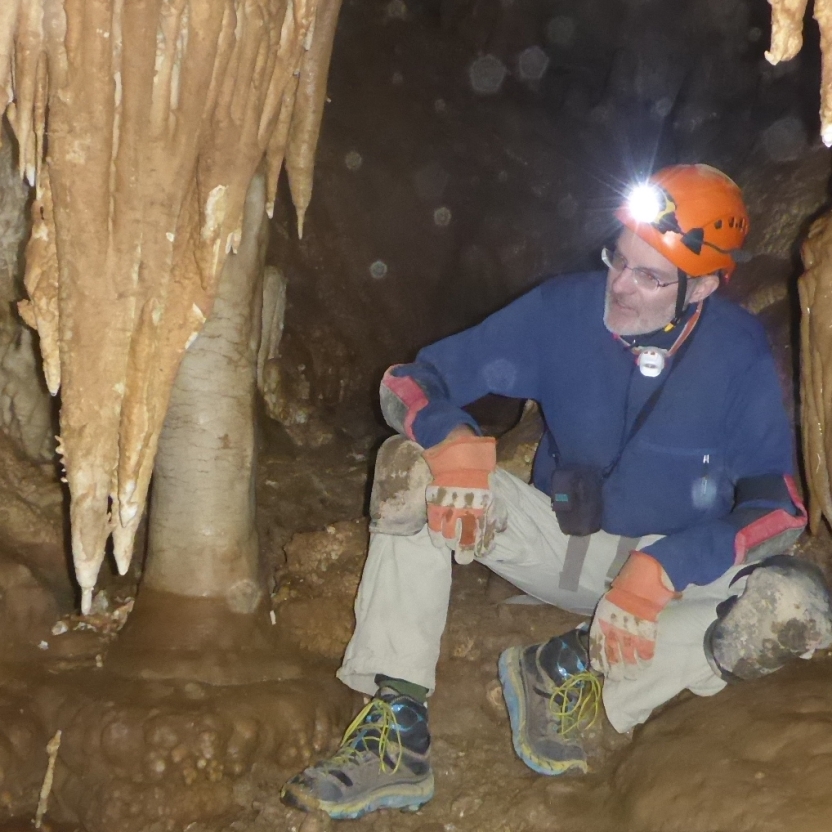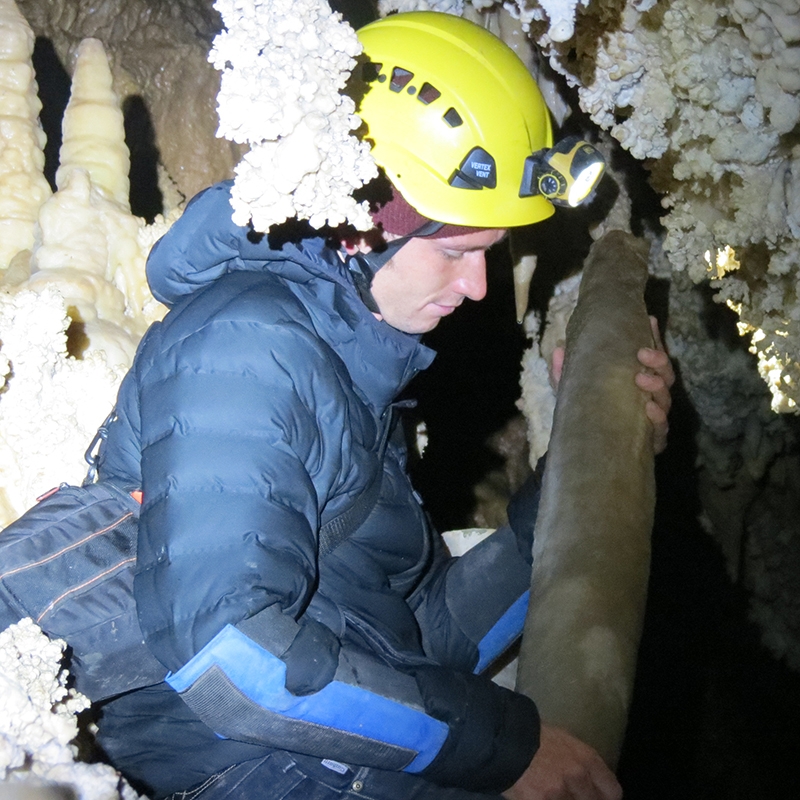Postcard from Utah: Geology Professor and His Student Go Deep into a Cave

Professor of Geology Jeff Munroe shared this snapshot of the research he’s been doing as he begins his yearlong sabbatical.
[video:https://vimeo.com/226197666/8d8587bc3a width:435]
In June of 2017, Emmet Norris ’19, a geology major, joined me for a week of fieldwork in Utah. Emmet was also with me in summer 2016 as part of my National Science Foundation–supported project studying alpine dust deposition, but our objective this time was somewhat deeper …
I’m on sabbatical for the 2016-2017 academic year and have received a Fulbright award to work as a visiting professor of natural sciences in the Institute of Geology at the University of Innsbruck in Austria. My award is split between teaching and research. For the teaching part I will offer an advanced undergraduate course on the geology of North America along with a graduate-level seminar on global glacial chronologies. For the research component I will collaborate with Professor Christoph Spötl, a recognized leader in the interpretation of climate records from cave deposits.

Emmet Norris ‘19 extracts a sample rock formation from a cave in Utah. Photo by Emmet Norris
Anyone who has toured a developed cave–for instance in a national park–will recognize the terms “stalactite” and “stalagmite”; they might even recall that these features grow slowly through the precipitation of minerals from drops of water. What they perhaps don’t know is that it’s possible to extract long and extremely detailed records of past climate by studying the chemical composition of these cave formations.
In my Fulbright application I proposed to collect a stalagmite from a cave in my long-term research area, the Uinta Mountains of northern Utah, and bring it with me to Austria to analyze in Dr. Spötl’s lab. No one has applied this approach to climate reconstruction before in this area and I’m very interested to see how the results fit into the bigger picture I’ve constructed from so many complementary projects over the years. Now that I had received the Fulbright award, it was up to Emmet and me to collect an appropriate sample.
I had visited the cave in 2016 as reconnaissance trip and identified a formation that met several key criteria. First, it was naturally broken off from its base, likely by an earthquake. Collection of pre-broken features is greatly preferred over breaking something new given how slowly these formations grow. Second, it was located off the main route through the cave, meaning that future visitors–for instance, if the cave were opened to tourists someday–wouldn’t notice that something had been removed. Third, it was big, increasing the chance that it contained a long record, but it wasn’t so big that we couldn’t transport it. Looking at them it’s easy to forget that cave formations are solid rock! Finally, it had the outward appearance of a stalagmite that had grown upward from the floor, which would increase the chance that it contained a long, continuous record of mineral precipitation.
The cave is located high on a cliff face above a beautiful canyon. It’s a very steep climb, and even if someone happened to find their way up there, the cave has a locked gate to prevent unauthorized access. Once inside there are a few tight spots where you have to crawl, but generally it’s pretty easy to move around. The formations are abundant and spectacular; both Emmet and I felt fortunate to be able to work in such an amazing place. We relocated the feature I selected last year, removed it carefully without damaging the surrounding formations, wrapped it in bubble wrap and tape, and carried it out. Once we reached the entrance, Emmet did the hard work of carrying it back down to the truck.

The sample rock formation from a Utah cave will provide records of past climates. Photo by Jeff Munroe
After the sample made a week–long trip cross-country via UPS, I cut it open with a rock saw, and polished it up so that the internal layers are visible. Unexpectedly, the layering is more typical of a stalactite that grew from the ceiling like an icicle, which is less ideal for the project I envisioned; it will certainly still work, but the record might not be as long. I’m currently planning a quick return trip later this month to grab a back-up sample—Utah is a bit of a haul from Vermont, but it’s easier to return for a second sample now than to come back from Austria!

